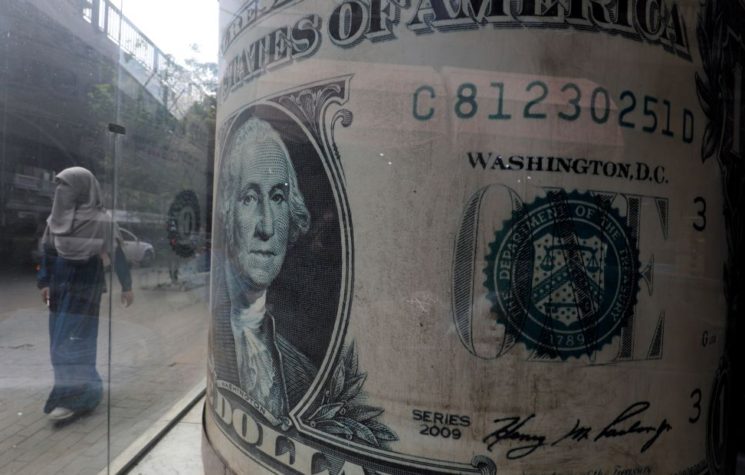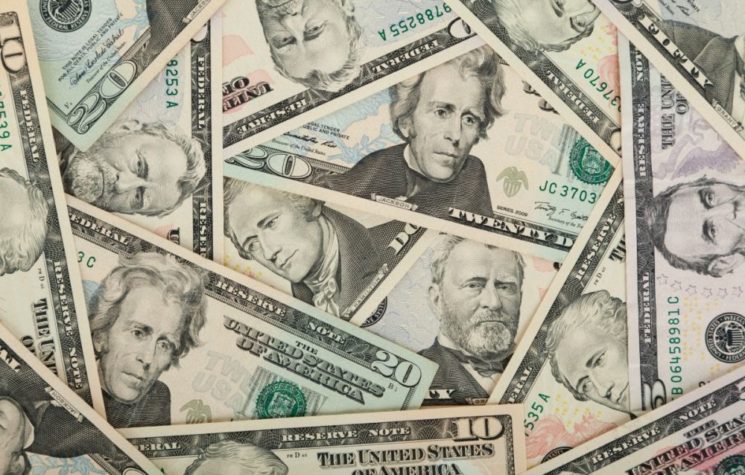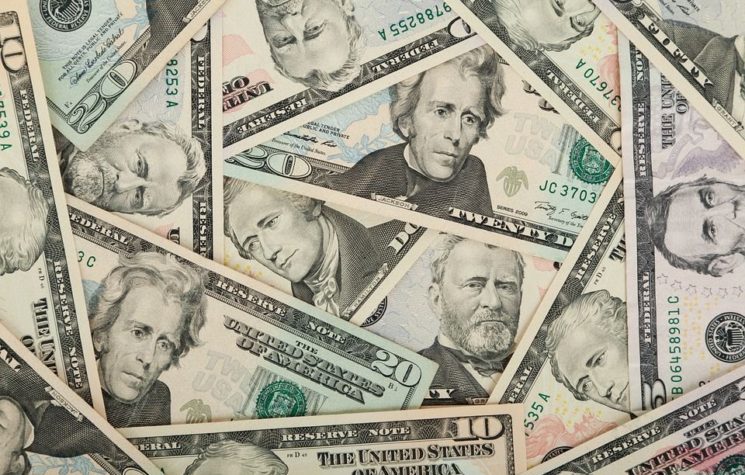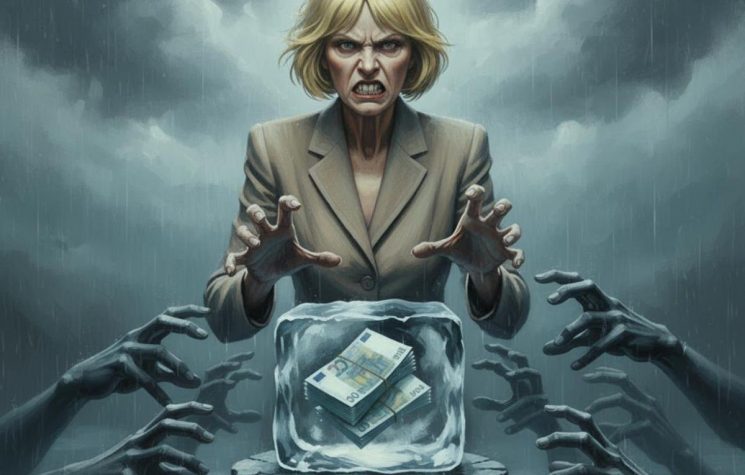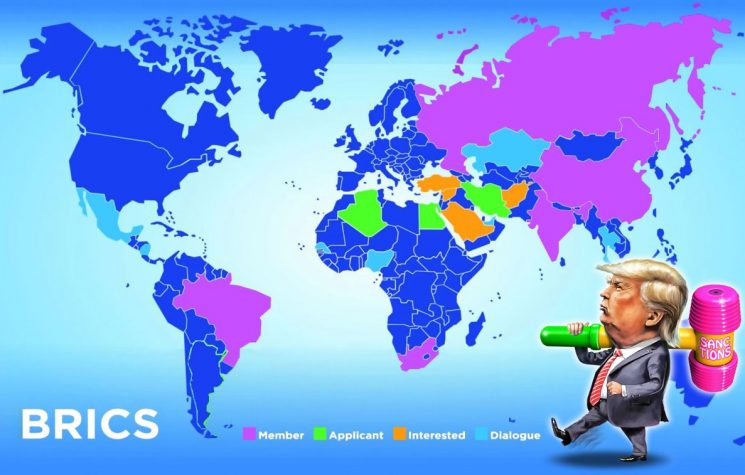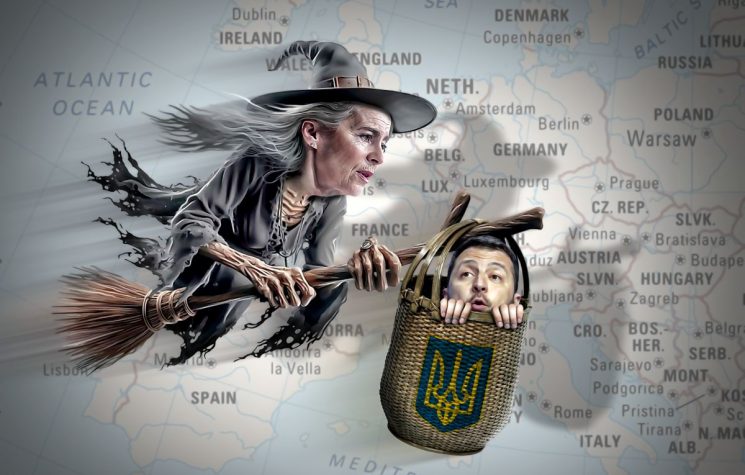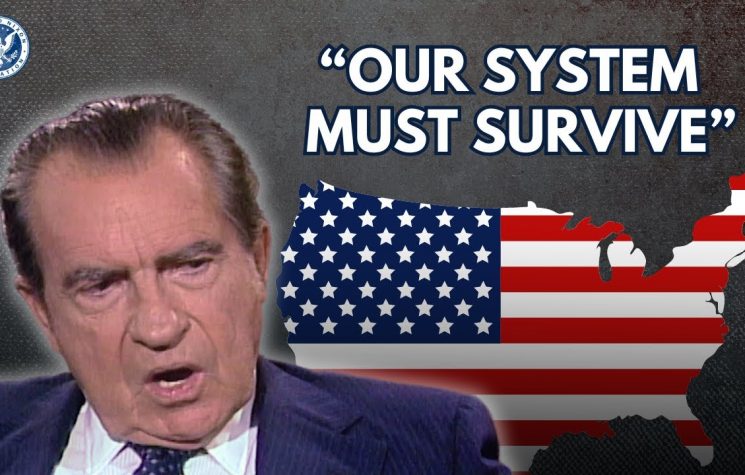Ironically, it was Stalin who was responsible for the economic reconstruction of Europe and the Bretton Woods system’s birth, Mauricio Metri writes.
On August 15th, 1971, the then-president of the United States, Richard Nixon, made an eighteen-minute speech to the country whose effects impacted the world. Among other subjects, he announced the end of the dollar-gold parity, which was a shock.
First of all, that decision meant the death of the Bretton Woods Monetary System without telling what would replace it. This fact represented an abrupt change in the international economic order. Secondly, Nixon’s initiative undermined the economic development strategies used since 1947, when the Cold War had started. Those strategies were called “development by invitation” in the center countries and “national developmentalism” in the peripheral ones. Thirdly, the decision strengthened the attacks against the dollar as the main currency in the world, putting more pressure on the international currency hierarchy since then. Finally, in the history of monetary standards, the abandonment of precious metals, as a reference of value, revealed the “charter nature” of money to the detriment of the metallist one.
In the debates on the Bretton Wood system, from its birth and development to its crisis and implosion, a particular narrative seems to prevail. This mainstream interpretation ascribes to the traumas of the great social-economic crisis in the thirties, the system’s origins. Besides the austerity public policies and the automatic recessive adjustments, at the heart of the twenties’ liberal economic order was the freedom of capital movements, whose behavior destabilized the exchange rates, the payments balances, and even the national economies. They were the root causes of the great depression of the thirties, mainly after the Wall Street crash of 1929 when the social and economic context got pretty worse. This scenario fostered the rise of far-right wings mainly in Europe, which created the elements of the beginning of the Second World War.
According to this view, to avoid another experience such as the great economic depression of the thirties and its disastrous effects, the diplomatic representatives of forty-four countries gathered in July 1944 in Bretton Woods, aiming to negotiate a new economic order to the post-war. The talks concluded that the most relevant cause of the economic crisis was the financial capital and its liberty to act against markets, currencies, and national economies. The central proposal was to guarantee the autonomy of the national economic policies. For this reason, they agreed on some points. For instance, capital controls; a system of fixed exchange rates but manageable when necessary; and stabilization funds via IMF without counterparts of recessive policies. It was a victory of Keynesianism against liberal economic orthodoxy. The very participation of John Maynard Keynes as the British government representative in the negotiations was a symbol of it, despite his defeat in defense of a supranational currency, the Bancor, as a new monetary standard.
As a result, the capitalist world, mainly Europe and Japan, achieved excellent economic outputs during the 50s and 60s in terms of product, income, and employment growth, just as international trade and foreign direct investments.
Finally, the mainstream narrative alleges that, during the period, the deficits in the U.S. balance of payments led to the sprawl of the dollar liquidity in the international system without an increase in the Fed’s gold reserves. According to this argument, the military spending growth due to the Vietnam War, above all, triggered such macroeconomic imbalances. So, pressures and speculative attacks against the dollar-gold parity became inevitable. Therefore, in 1971, the situation turned out to be unsustainable.
Nevertheless, from a geopolitical view, it is possible to consider another interpretation for the Bretton Wood system, from its creation to its collapse. First of all, although the authorities of different countries had signed the accords in July 1944, since Roosevelt’s death in March 1945, relevant parts of the agreements were shelved. Henry Morgenthau and Harry White, architects of the postwar new economic order, lost room in the Truman administration. In their place, the bankers constrained the president to implement the Key Currency Plan, which proposed to rebuild a liberal international financial order as it had been in the twenties. However, the new system would rest on the dollar and Wall Street instead of the Pound and the City. Regarding Germany and Japan, the new U.S. orientation aimed to wreck their large industrial conglomerates, transforming their national economies into semiperipheral ones.
Indeed, the international economic order established from 1945 to 1947 operated quite differently than the Agreements of 1944, and the results were terrible. The attempts to recover the national economies stumbled upon the dollar shortage and the difficulties in the Balances of Payments. In this context, the financial capitals in Europe ran to the United States, destabilizing the exchange rates, the external accounts, and, therefore, the national economies in Western Europe. As is natural to all liberal finance orders, not considering capital controls was the core of the economic problems.
Furthermore, during the war, Josef Stalin expanded the borderlines of the Soviet Union and its area of influence to a position unthinkable to any Romanov Emperor. Not to mention that Russia found itself, for the first time in its history, without a single great rival power in all of Eurasia, as said by George Kennan himself, in an official document of May 1945, entitled The International Position of Russia at the End of the War with Germany.
Anyway, the change in the strategy of the Truman Administration lingered to happen. And it took place only in 1947 for two reasons: the civil war in Greece between the old monarchy supported by the British against the anti-fascist forces led by communists and upheld by the Kremlin; and the pressure of Moscow on Ankara to control territories in Anatolia and install two military bases at the straits. Since then, the U.S. president opted for occupying part of the Rimland that Nicholas Spykman had written about before, in his book of 1942, America’s Strategy in the World Politics.
From a geo-historical point of view, it meant a long-standing tradition of Anglo-Saxon geopolitical thought of maintaining Russia outside of the Mediterranean Sea. Its roots had already been in the British imperial policy of the 19th century, as the Greek independence process during 1821-1830 demonstrates.
The head orientation of the new security doctrine launched by Truman in 1947 pointed to the necessity of permanent and global containment of the USSR. The objective was to freeze their respective areas of influence, leaving both countries, in effect, in a continuous opposition against each other. The U.S. projection of securities lines from their Atlantic borders to the Eurasian continental mass required the stabilization of the new disputed regions, mainly in the fimbriae of Asia. Working out the social and economic problems in these regions became part of the U.S. national security strategy. And, at that moment, the main actions prioritized Europe and Japan.
Then, to avoid the Soviet projection in a Europe marked by a severe economic crisis, the United States resumed rebuilding an international order focused on national product expansions, income growths, and employment improvements. The Marshall Plan and the rescue of the Bretton Woods proposals shaped the core of American economic initiatives. Therefore, both of them had a main geopolitical objective. They were an expression of the submission of the economic order to the geopolitical one. In other words, one could define both Marshall Plan and Bretton Woods system as pieces of economic geostrategy of a new kind of conflict, born around 1947, the Cold War. So, the starting point of the Bretton Woods implementation relies essentially on geopolitics, not on social-economic traumas from the thirties. It could be said, in this way, that the Soviet Union and its leader, Josef Stalin, were respectively the entity and personal genuinely responsible for the economic reconstruction of Europe and the Bretton Woods system’s birth.
As a result, the United States could stabilize the national economies in the sensitive regions relative to Cold War and freeze the frontiers with the communist nations. In the limit, they promoted a quarter-century of extraordinary development in first-world countries. In short, the Cold War was the background that allowed the Bretton Woods System to work out from 1947 until the moment when the U.S. economic strategy to its geopolitical struggles changed.
Concerning Bretton Woods’ contradictions, the creation of Euromarkets in 1958 within England, supported by U.S. authorities, allowed the British government to conciliate two different challenges: on the one hand, carrying out a growth-oriented economic policy; and, on the other, defending London’s position in the international financial business. However, these new markets, out of the control of any monetary authorities, expanded more and more the dollar liquidity in the system.
Unlike the mainstream narrative, the U.S. external accounts weren’t unbalanced, shown in the rather unexpressive U.S. compensatory capital flows in its Balance of Payments during the Bretton Woods period. Part of the system dollar liquidity arose from what Charles Kindleberger [1] and Hyman Minsky [2] described as the deepening process of resources inflows and outflows from the United States to the world. While the Trade Balance and the Current Account were positives, the U.S. Capital Account was negative due to the Foreign Direct Investment. So, the pressure against the dollar-gold parity didn’t come from the supposed deficits in their external accounts. It stemmed from the financial markets, whose operations manifolded without restrictions to the dollar assets in the capitalist world, namely, Euromarkets. The problem was that it occurred without a counterpart of growth in the Fed’s gold reserves.
Therefore, if the Bretton Woods implementation were geopolitical and not due to the traumas of the thirties’ economic crisis, its contradictions came from the Euromarkets and not from the North American external accounts’ imbalances. In turn, its existence depended on how useful it would be to U.S. foreign policy.
In 1969, the international context changed expressively. If Bretton Woods System had already promoted the most important historical era of capitalism, the Soviet Union had also achieved substantial strategic improvements in the 60s. There had been its nuclear weapons’ progress, the strengthening of its navy, the development of edge-cutting aerospace technology, and the expansion of its oil production, among others. And this new Soviet success in the 60s had pressured not only the United States and its allies from the first world but also the Popular Republic of China. In that background, Beijing signalized to Washington a careful approach in 1969. The Nixon administration, in turn, took advantage and started the Triangular Diplomacy. Since then, the American government implemented concessions to Beijing and Moscow, such as reductions of economic sanctions.
For example, in that year, the United States created new legislation, altering the Export Control Act of 1949. Later, in April 1971, only three months before the famous Nixon’s speech, the United States lifted some previous restrictions once more. It allowed the purchase of dollars by China and USSR to encourage their import of products from the capitalist world. So, a valuable triangular diplomacy result was the beginning of the entrance process of China and the Soviet Union into the dollar monetary territory on the eve of the end of the Bretton Woods System.
When Nixon addressed the American people on television in August 1971, the strategy of 1947 had already achieved its economic aims. Besides, Japan and Germany had already become strong adversaries in the international economic competition. Not to mention, the Bretton Woods contradictions still required efforts and coordination with the Europeans and Japanese in financial governance, such as in the Gold Pool and the IMF due to Special Drawing Rights, which sometimes was causing tension and opposition among them. Finally, the Bretton Woods System still enforced restrictions on the U.S. managing their economic policy, as in the dollar-gold parity defense.
Richard Nixon started his famous speech by mentioning: alleged advances in “achieving the end of the Vietnam War,” the “challenges of peace,” despite not specifying them, and the “prosperity without military conflicts.” Next, he connected the last of these issues directly to jobs creation in the United States, control of the internal cost of living, and dollar protection, going quickly from tricky subjects of international relations to national issues in daily life. Then, Nixon announced some economic measures with an orthodox bias to encourage the employment increase, for example, tax reductions and spending cuts. He also ordered radical heterodox economic policies to contain the rise in prices: the freeze on all prices and wages for 90 days.
The population was likely astonished and pretty worried about such sort of economic measures, because it always creates graves problems of relative price imbalances. Probably, when Nixon approached the theme of “protection the position of the American dollar as a pillar of monetary stability around the world,” as he said, the attention in the country was still in the freeze on prices and salaries.
After describing the speculators’ efforts in “waging an all-out war on the dollar,” he argued that the strength of a nation’s currency rests on the strength of that nation’s economy. And, then, Nixon claimed the U.S. position in the international monetary hierarchy by saying that “the American economy is by far the strongest in the world.” Next, he clarified the U.S. disposition when he ordered the Secretary of the Treasury to take any necessary action to defend the dollar. And, finally, he announced what would be unthinkable until that moment: the suspension of the dollar-gold convertibility. According to him, a bugaboo that it should lay to rest.
For the domestic audience, Nixon justified the decision by the devaluation advantages to the American-made products in America. For that matter, he also imposed an additional tax of 10% on goods imported into the United States.
Nixon announced the abandonment of the old economic geostrategy inaugurated in 1947 by the Truman administration. He pointed that economies of the major industrial nations of Europe and Asia had become strong competitors against the United States. Then, there was no longer any need for “the United States to compete with one hand beyond her back.” According to Nixon, the time had come for first-world nations to compete as equals. In other words, President Nixon put an end to the development by invitation, except for China, which had been engaging in a strategic rapprochement with the United States.
Summarizing the argument, before 1969, as long as the foreign policy hadn’t changed, the successive U.S. administrations had carried on upholding the Bretton Woods System and its aims, despite its contradictions. To circumvent its problems, they had implemented some efforts, as Gold Pool, Special Drawing Rights, etc. Therefore, during the Cold War’s first decades, the U.S. support for the Bretton Wood order had occurred since this economic system had reached its geopolitical objectives. However, since the international context had changed expressively in the 60s, the economic order had become more and more inappropriate. It had depleted as a Cold War’s strategic instrument, and it had been inadequate and outdated for the new geopolitical struggles and geoeconomic challenges. In other words, the emergence of new economic competitors and mainly the outcomes of Soviet projection in the system brought shifts in U.S. foreign policy in 1969, originating the triangular diplomacy. And, two years later, in 1971, the United States unilaterally abandoned the Bretton Woods Agreements.
It sounds ironic that the most significant historical experience of western capitalism was related to Stalin’s strategy of enlarging the Soviet frontiers in the context of the Second World War and the capacity of the Soviet Union to respond to the Cold War against the United States, mainly during the 60s.










